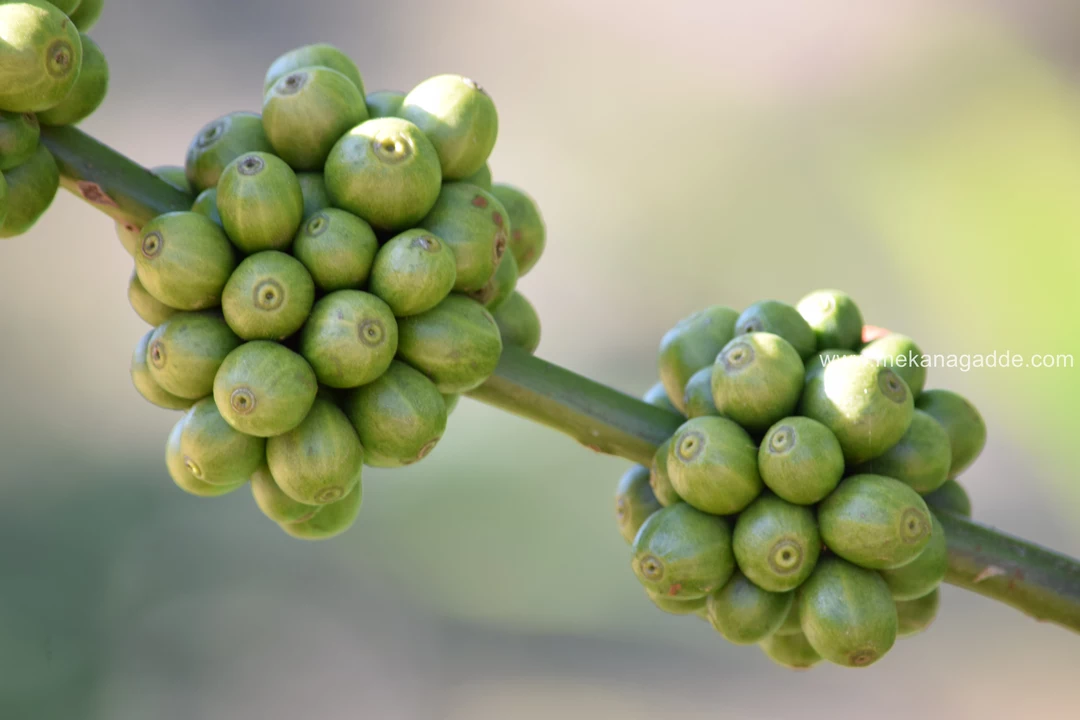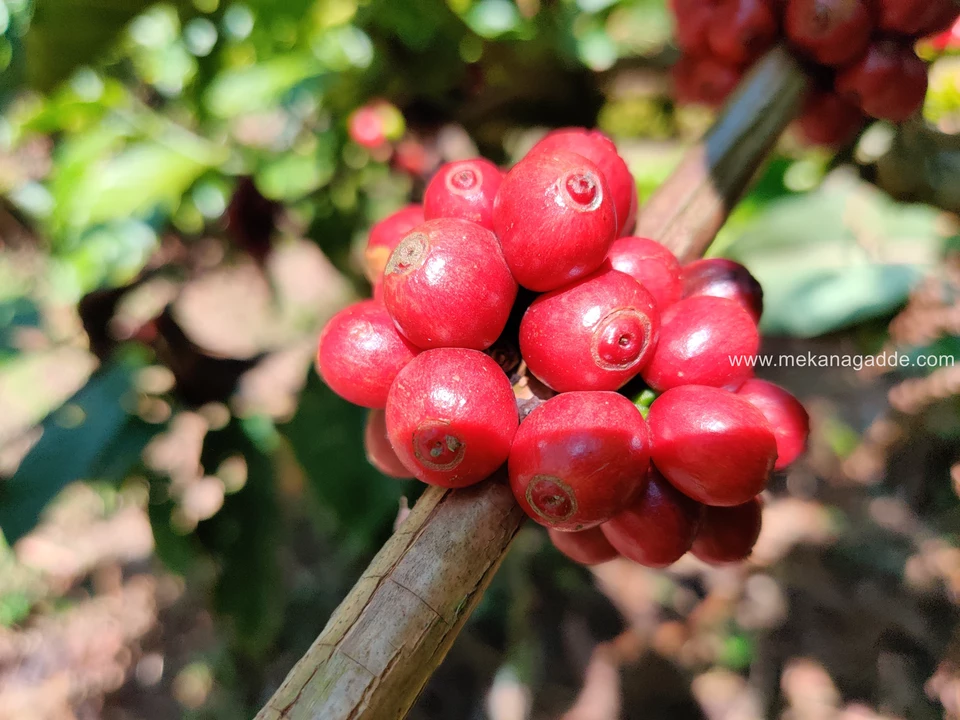Within the glass and chrome interiors, you will find a huddle shouting out “Cappuccino!”, a couple melting into each other’s eyes over the cream of a Frappe, and a never receding throng at the counter debating between the above two and the Espresso, Macchiato, Affogato, Cafe latte, Ristretto and so on.
Juxtaposed with the glitz and gleam of the boutique coffee shop is a vintage coffee house, just as much a crowd puller albeit with the older generation, who jostle for space, along with a trickle of sophomores enjoying their filter coffee. The aroma of coffee lingers… leading you on the trail of how, why and when the beverage became a hot favourite – the history of coffee in India!
From a Sufi saint’s hermitage backyard to an entire country – the Journey of Coffee in India
All the way from Ethiopia
Coffee became a phenomenon only in the late 1970’s, though coffee beans made their way to the Indian subcontinent by as early as the 17th century. Tracing the journey of coffee seeds to Ethiopia, where it is believed to have been cultivated initially, the beverage along with tea was a predominantly European and Middle Eastern drink.
In the early stages of its entry into India, coffee was more of a colonial drink, commonly associated with the elite and modern folks of the Indian society who worked under the British during the pre-independence era. It was considered relatively rich as it was brewed in milk, compared to the humble tea which chiefly used water as a base.
So how did the flavour of coffee slowly seep into the Indian cultural ethos? How did a handful of seeds become a thriving ecosystem to a sustainable economy? How did the beans grow roots in India?
Finding a foothold in India
From its origin in Ethiopia to the beverage’s popularity in Yemen, (Mocha is a port in Yemen) as found in Sufi monasteries, the seeds have undertaken a ‘pilgrimage’ of sorts. While it went through several transformations to become the coveted seed of a refreshing drink, the genesis of the coffee is believed to have begun in Chikmagalur.
Dating back to 1600 AD, it was the Indian Sufi saint, Baba Budan, who during his pilgrimage to Mecca made the finding. Journeying through Mocha, he came across the dark, aromatic liquid called Qahwah, which was distinct and refreshing.
Grabbing a handful of the coffee seeds and tucking it in his chest – for the Arabs showed an overarching protectiveness about their treasured coffee – he brought them to India and planted the seeds in the courtyard of his hermitage in Chikmagalur.
And this is how coffee was introduced to the Indian soil. From the backyard of the Sufi saint’s hermitage, the beans proliferated to the hills, which later came to be known as the Baba Budan hills, or Baba Budangiri locally, in Chikmagalur.
Trailing through the country
The history of coffee in India follows quite an interesting trail through the country. From the birthplace of coffee in Chikmagalur to the thriving plantations in different regions of South India, the colonial influences in spreading the ‘aroma’ were strong. The Dutch chose the Malabar region to cultivate coffee, while the British spearheaded a plantation drive of Arabica coffee across other hilly regions of South India where both the climate and the soil were found to be apt.
From a small piece of land to a widespread kingdom, coffee established its reign in the Western Ghats region of Karnataka, Tamil Nadu and Kerala. The offshoots of coffee cultivation have also spread to non-traditional areas along the Eastern coast, in states like Odisha and Andhra Pradesh, as well as some regions in the North East.
From brewing to tasting
India is now home to around 16 unique varieties of coffee. But all varieties trace their roots to the basic Arabica and Robusta coffee beans. The variations, though, have spurred a tasting culture where, depending on the texture of the beans and flavour of the coffee, the place of origin and season of harvest can be determined.
From the time of harvest to the process of roasting and brewing, the rich coffee flavour gets infused at each stage. It is at the roasting stage that specific blends are added to impart the signature aroma to the drink. The two major variants of traditional Indian coffee, which is widely consumed in most homes, are instant coffee and the much-loved filter coffee. The instant variety is available as a readily soluble granulated powder whereas the filter coffee powder demands a different treatment altogether.
The distinct fragrance of filter coffee has made it an iconic part of South India with patrons from across the subcontinent and the world. The filter coffee is the quintessence of the South Indian tradition with the Kumbakonam, Mysore, Mylapore/Madras filter kaapi (as it is referred to colloquially) making a distinguished presence on the table. For instance, the coffee houses in Chennai, from the vintage to the new age ones, that serve filter coffee have a devout following and are crowd pullers amongst tourists too!
The ‘kaapi’ that brewed ever after
Going by the history of coffee in India, filter coffee’s standing among its consumers was not an overnight transformation. From being the niche to becoming a product of mass appeal, the delicious brew evolved with the tastes, preferences and mindset of Tamilians.
Before the traditional filter kaapi emerged as a popular brand, the locals would source it from coffee makers in the neighborhood. That was until the coveted Leo filter coffee brand set up its first outlet in Chennai in the year 1971. The coffee powder is prepared by judiciously blending the Peaberry, Robusta and plantation variety while adding chicory (roasted tap root) to the roasted coffee beans while grinding. While the chicory imparts colour, it is caffeine-less and is used as a relatively inexpensive substitute for coffee. Generally, any branded coffee powder preparation involves a certain percentage of chicory added to it.
Coffee debates
While the coffee makes the journey from the bean to the cup, the nuances that go into making the perfect filter kaapi are still a topic of contention amongst connoisseurs, puritans and plain coffee-lovers alike. While some contest over the brand or purity of the powder, others debate over the dilution as well as the quality and thickness of the milk that goes into its preparation. To the extent that some popular coffee joints get the milk sourced from exclusive milch cows!
Author’s note
Born a Tamilian and brought up in Delhi, it was filter coffee that brewed in my household even in the harsh conditions of Delhi winter. With no deviation from the ritual, at the crack of dawn, the cramped space outside the threshold of my house would be rigorously swept for the traditional kolam design, with the renditions of M.S. Subbulakshmi playing in the background.
And before dad would sink into the newspaper, the simmering saucepan would have tipped into the filter containing the calibrated measure of coffee powder. The effervescing decoction and the culmination of the song would be in perfect rhythm as the coffee brewed. to be served in a davarah tumbler, frothing to the rim.
Its aroma would waft through, pushing all pressing deadlines and hot headlines aside, and he would religiously follow the practice of frothing it further by letting the drink fall into the davarah from a stipulated height! The first sip would be savoured in its piping hotness, as I would look at him yearningly (whenever I would wake up early) and he would indulge me with the last drop or two just for the taste! The taste and aroma of mom’s filter coffee linger till date, the memories as fragrant and fresh as ever!
Author: Uma Sarangan


Leave a Reply
You must be logged in to post a comment.